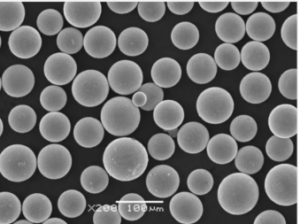Überblick über Induktiv gekoppeltes Plasma (ICP)
Induktiv gekoppeltes Plasma (ICP) ist eine Technologie, die im Bereich der analytischen Chemie, der Materialwissenschaft und der Metallurgie von grundlegender Bedeutung ist. Aber was genau ist ICP, und warum hat es so große Bedeutung erlangt? Einfach ausgedrückt ist ICP eine Technik zur Erzeugung eines Hochtemperaturplasmas, das für den Nachweis und die Analyse verschiedener Elemente, insbesondere von Metallen, eingesetzt werden kann. Dieses leistungsstarke Analysewerkzeug wird in der Regel in der Spektrometrie eingesetzt und ermöglicht die präzise Messung von Metallkonzentrationen in Proben mit außergewöhnlicher Genauigkeit.
Stellen Sie sich vor, Sie suchen eine Nadel im Heuhaufen - was wäre, wenn Sie das ganze Heu wegbrennen könnten und nur die Nadel übrig bliebe? Das ist in etwa das, was ICP tut, wenn es Proben auf ihre elementare Zusammensetzung analysiert. Sie verbrennt das gesamte unerwünschte Material und hinterlässt nur die Elemente, die für Sie von Interesse sind, was sie zu einer äußerst effektiven Methode für die Materialanalyse macht.
In diesem umfassenden Leitfaden werden wir uns mit den Einzelheiten der ICP befassen und ihre Prinzipien, Typen, Anwendungen und die spezifischen Metallpulvermodelle, die in Verbindung mit der ICP verwendet werden, untersuchen. Am Ende dieses Artikels werden Sie ein tiefes Verständnis dafür haben, wie ICP funktioniert, warum sie eingesetzt wird und wie sie im Vergleich zu anderen Analysetechniken abschneidet.
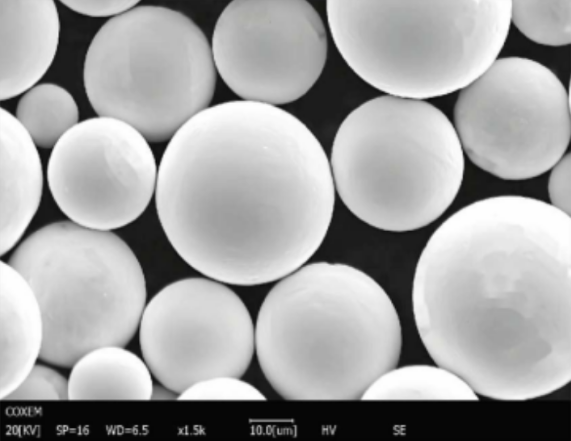
Was ist ein induktiv gekoppeltes Plasma (ICP)?
Induktiv gekoppeltes Plasma ist eine Art von Plasmaquelle, bei der die Energie durch elektrische Ströme geliefert wird, die durch elektromagnetische Induktion erzeugt werden. Die Technologie wurde erstmals in den 1960er Jahren entwickelt und hat sich seitdem zu einem Eckpfeiler der Elementaranalyse entwickelt. Aber lassen Sie uns das Ganze aufschlüsseln.
Im Kern geht es bei der ICP um die Verwendung eines hochfrequenten elektromagnetischen Feldes, das von einer Hochfrequenzspule erzeugt wird, um ein Gas (normalerweise Argon) zu ionisieren und ein Plasma zu erzeugen. Dieses Plasma erreicht Temperaturen von bis zu 10.000 K (das ist heißer als die Oberfläche der Sonne!), was ausreicht, um die Elemente in einer Probe zu atomisieren und zu ionisieren. Diese ionisierten Elemente können dann mit verschiedenen Arten der Spektrometrie nachgewiesen werden, am häufigsten mit ICP-OES (optische Emissionsspektrometrie) oder ICP-MS (Massenspektrometrie).
Schlüsselkomponenten eines ICP-Systems:
- RF-Generator: Erzeugt das elektromagnetische Feld.
- Fackel: In der Regel aus Quarz, in dem das Plasma erzeugt wird.
- Muster-Einführungssystem: Führt die Probe in das Plasma ein.
- Plasma-Gasversorgung: Am häufigsten wird Argongas verwendet.
- Spektrometer: Analysiert die emittierten oder entdeckten Ionen.
Die hohe Energie des Plasmas zerstäubt nicht nur die Probe, sondern regt auch die Atome und Ionen an, so dass sie Licht mit bestimmten Wellenlängen aussenden. Dieses Licht ist charakteristisch für die Elemente in der Probe und ermöglicht deren Identifizierung und Quantifizierung.
Arten von induktiv gekoppelten Plasmaanlagen
Je nach Art der Probe, der erforderlichen Empfindlichkeit und der gewünschten Genauigkeit werden verschiedene Arten von ICP-Systemen auf bestimmte Anwendungen zugeschnitten. Zu den wichtigsten Typen gehören:
1. ICP-Optische Emissionsspektrometrie (ICP-OES)
Bei dieser auch als ICP-AES (Atomemissionsspektrometrie) bezeichneten Methode wird das von Atomen und Ionen emittierte Licht gemessen, wenn diese in einen niedrigeren Energiezustand zurückkehren. ICP-OES eignet sich besonders gut für die Analyse mehrerer Elemente und bietet ein gutes Gleichgewicht zwischen Empfindlichkeit und Dynamik.
Anwendungen:
- Umweltanalyse (Wasser, Boden, Luft)
- Metallurgische Analyse
- Prüfung von Lebensmitteln und Getränken
- Pharmazeutische Analyse
Vorteile:
- Gleichzeitige Erkennung mehrerer Elemente
- Hoher Durchsatz
- Geringere Betriebskosten im Vergleich zu ICP-MS
2. ICP-Massenspektrometrie (ICP-MS)
ICP-MS geht bei der Analyse noch einen Schritt weiter, indem es Ionen auf der Grundlage ihres Masse-Ladungs-Verhältnisses nachweist. Diese Technik bietet eine unvergleichliche Empfindlichkeit und die Möglichkeit, Spurenelemente in extrem niedrigen Konzentrationen nachzuweisen.
Anwendungen:
- Analyse von Spurenelementen in biologischen Proben
- Geochemische und isotopische Analyse
- Halbleiterindustrie
- Nuklearwissenschaft
Vorteile:
- Äußerst hohe Empfindlichkeit
- Fähigkeit zum Nachweis von Isotopen
- Großer Dynamikbereich
3. ICP-Flugzeitmassenspektrometrie (ICP-TOFMS)
ICP-TOFMS ist eine Variante der ICP-MS, bei der die Ionen auf der Grundlage der Zeit getrennt werden, die sie für den Weg durch ein Flugrohr benötigen. Diese Methode ermöglicht den schnellen, gleichzeitigen Nachweis mehrerer Elemente und Isotope und ist damit ideal für Anwendungen mit hohem Durchsatz.
Anwendungen:
- Fortgeschrittene Materialwissenschaft
- Analyse von Nanopartikeln
- Multielementanalyse in Umweltproben
Vorteile:
- Schnelle Analyse
- Hohe Auflösung
- Gleichzeitige Erkennung
Zusammensetzung der Induktiv gekoppeltes Plasma
Die Zusammensetzung des Plasmas bei der ICP besteht überwiegend aus Argon, einem Edelgas, das chemisch inert ist und zur Stabilisierung des Plasmas beiträgt, während es eine Verunreinigung der Probe verhindert. Die Verwendung von Argon ist von entscheidender Bedeutung, da es nicht mit der Probe oder dem Brenner reagiert und somit eine saubere und kontrollierte Umgebung für die Ionisierung gewährleistet.
Je nach Anwendung können jedoch andere Gase oder Zusatzstoffe in das Plasma eingebracht werden, um seine Eigenschaften zu verbessern oder es auf spezifische analytische Anforderungen zuzuschneiden.
Plasmagaszusammensetzung und Zusatzstoffe:
| Komponente | Funktion | Vorteile |
|---|---|---|
| Argon | Hauptplasmagas | Stabil, inert, verhindert Kontamination |
| Helium | Trägergas oder Zusatzstoff | Erhöht die Empfindlichkeit für bestimmte Elemente |
| Stickstoff | Zusatzstoff | Erhöht die Signalintensität für spezifische Analysen |
| Sauerstoff | Verbrennungsmuster | Nützlich für die Analyse organischer Proben |
Argon wird vor allem wegen seines hohen Ionisierungspotenzials und seiner Fähigkeit, ein stabiles Plasma aufrechtzuerhalten, gewählt. Andere Gase wie Helium können verwendet werden, um den Transport der Probe in das Plasma zu verbessern oder um den Nachweis bestimmter Elemente durch Veränderung der Plasmaeigenschaften zu verbessern.
Warum Argon?
Die Wahl von Argon als primäres Plasmagas hat mehrere Gründe. Erstens sorgt seine Inertheit dafür, dass es die Analyse nicht durch Reaktionen mit der Probe stört. Zweitens ist seine hohe Ionisierungsenergie ideal für die Erzeugung eines robusten Plasmas, das die Elemente in der Probe effizient ionisieren kann.


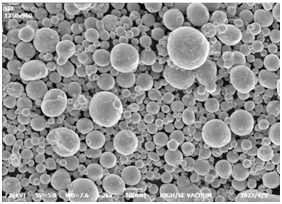

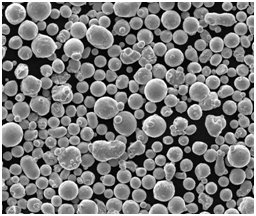

Merkmale des induktiv gekoppelten Plasmas
Die einzigartigen Eigenschaften der ICP machen sie zu einer bevorzugten Wahl für die Elementaranalyse. Im Folgenden werden wir die wichtigsten Eigenschaften erörtern, die zu seiner Effektivität beitragen.
Hohe Temperatur
Die hohe Temperatur der ICP (bis zu 10.000 K) sorgt dafür, dass selbst die refraktärsten Elemente vollständig atomisiert und ionisiert werden. Dies ist entscheidend für eine genaue und vollständige Elementaranalyse, insbesondere bei Proben mit komplexen Matrices.
Inerte Atmosphäre
Die Verwendung von Argon sorgt für eine inerte Atmosphäre, wodurch das Risiko einer Kontamination oder unerwünschter Reaktionen minimiert wird. Dies ist besonders wichtig bei Anwendungen, bei denen es auf Präzision ankommt, wie z. B. bei der Spurenmetallanalyse oder der Halbleiterherstellung.
Effiziente Ionisierung
Die Fähigkeit der ICP, Elemente effizient zu ionisieren, auch solche mit hohem Ionisierungspotenzial, ist eine ihrer herausragenden Eigenschaften. Dadurch ist es möglich, eine breite Palette von Elementen nachzuweisen, von Leichtmetallen wie Lithium bis hin zu Schwermetallen wie Uran.
Stabile und reproduzierbare Bedingungen
Die Stabilität des Plasmas und die Reproduzierbarkeit der ICP-Bedingungen gewährleisten, dass die Ergebnisse konsistent und zuverlässig sind. Dies ist wichtig für Anwendungen, bei denen die Wiederholbarkeit von entscheidender Bedeutung ist, wie z. B. bei der Qualitätskontrolle oder bei der Prüfung der Einhaltung von Vorschriften.
Multi-Element-Fähigkeit
Einer der größten Vorteile der ICP ist ihre Fähigkeit, mehrere Elemente gleichzeitig zu analysieren. Dies ist besonders in Branchen von Vorteil, in denen eine umfassende Analyse komplexer Proben erforderlich ist, z. B. bei Umweltprüfungen oder metallurgischen Analysen.
Anwendungen des induktiv gekoppelten Plasmas
Induktiv gekoppeltes Plasma wird dank seiner Vielseitigkeit und Genauigkeit in einer Vielzahl von Anwendungen eingesetzt. Im Folgenden werden einige der wichtigsten Branchen und Sektoren vorgestellt, in denen ICP eingesetzt wird.
Umweltanalyse
ICP wird häufig bei Umweltprüfungen eingesetzt, um den Gehalt verschiedener Elemente in Wasser, Boden und Luft zu überwachen und zu bewerten. Dazu gehört auch der Nachweis von Schwermetallen wie Blei, Quecksilber und Arsen, die aufgrund ihrer Toxizität besonders bedenklich sind.
Beispiele für Verwendungen:
- Untersuchung des Trinkwassers auf Verunreinigungen
- Überwachung des Bodens für landwirtschaftliche Zwecke
- Bewertung der Luftqualität in Industriegebieten
Pharmazeutische Industrie
In der pharmazeutischen Industrie wird die ICP eingesetzt, um die Reinheit von Rohstoffen und die Sicherheit von Endprodukten zu gewährleisten. Die Analyse von Metallspuren ist in diesem Sektor von entscheidender Bedeutung, um Verunreinigungen zu vermeiden, die die Wirksamkeit und Sicherheit von Medikamenten beeinträchtigen könnten.
Beispiele für Verwendungen:
- Analyse von pharmazeutischen Wirkstoffen (APIs)
- Prüfung auf Metallverunreinigungen in Arzneimitteln
- Gewährleistung der Einhaltung gesetzlicher Normen
Lebensmittel- und Getränketests
Die Sicherstellung, dass Lebensmittel und Getränke frei von schädlichen Metallkonzentrationen sind, ist für die öffentliche Gesundheit unerlässlich. ICP wird in großem Umfang eingesetzt, um eine Vielzahl von Lebensmitteln auf Schadstoffe wie Blei, Cadmium und Quecksilber zu untersuchen.
Beispiele für Verwendungen:
- Analyse des Metallgehalts in Lebensmittelkonserven
- Prüfung auf Verunreinigungen in abgefülltem Wasser
- Überwachung des Metallgehalts in landwirtschaftlichen Erzeugnissen
Metallurgie und Werkstoffkunde
Die ICP spielt eine entscheidende Rolle in der Metallurgie, wo sie zur Analyse der Zusammensetzung von Metallen und Legierungen eingesetzt wird. Dies ist wichtig für die Qualitätskontrolle, die Werkstoffentwicklung und um sicherzustellen, dass die Produkte die erforderlichen Spezifikationen erfüllen.
Beispiele für Verwendungen:
- Analyse von Metalllegierungen für Luft- und Raumfahrtanwendungen
- Prüfung der Reinheit von Edelmetallen
- Überwachung der Zusammensetzung von Stahl und anderen industriellen Materialien
Geochemische und isotopische Analyse
ICP ist
wird auch in der Geologie verwendet, um Gesteine, Mineralien und Bodenproben auf ihre Element- und Isotopenzusammensetzung zu analysieren. Dies ist wichtig für das Verständnis der Erdgeschichte sowie für Explorations- und Bergbauaktivitäten.
Beispiele für Verwendungen:
- Bestimmung der Zusammensetzung von Mineralvorkommen
- Analyse von Gesteinsproben für Isotopenstudien
- Untersuchung der Bodenzusammensetzung in der Agrarforschung
Spezifische Metallpulvermodelle für die ICP
Metallpulver werden häufig mit ICP analysiert, um ihre Zusammensetzung, Reinheit und andere Merkmale zu bestimmen. Im Folgenden finden Sie zehn spezifische Metallpulvermodelle, die häufig in Verbindung mit der ICP-Analyse verwendet werden, sowie deren Beschreibungen.
1. Nickel-Pulver (Ni)
Nickelpulver wird in einer Vielzahl industrieller Anwendungen eingesetzt, unter anderem bei der Herstellung von Legierungen, Beschichtungen und Batterien. Bei der ICP-Analyse wird Nickelpulver auf seine Reinheit und das Vorhandensein von Spurenelementen untersucht.
2. Titan-Pulver (Ti)
Titanpulver wird häufig in der Luft- und Raumfahrt, bei medizinischen Implantaten und in der additiven Fertigung eingesetzt. ICP wird eingesetzt, um sicherzustellen, dass das Titanpulver die strengen Reinheitsanforderungen für diese Anwendungen erfüllt.
3. Aluminium-Pulver (Al)
Aluminiumpulver wird bei der Herstellung von leichten Materialien, Sprengstoffen und Beschichtungen verwendet. Die ICP-Analyse ist unerlässlich, um die elementare Zusammensetzung zu überprüfen und eventuelle Verunreinigungen zu erkennen.
4. Kupferpulver (Cu)
Kupferpulver ist ein Schlüsselmaterial in der Elektronik, bei leitfähigen Tinten und in der Metallurgie. Die ICP-Analyse hilft bei der Bestimmung der Reinheit und Zusammensetzung von Kupferpulver, die für seine Leistung in diesen Anwendungen entscheidend sind.
5. Eisenpulver (Fe)
Eisenpulver wird in einer Vielzahl von Anwendungen eingesetzt, z. B. für Automobilteile, magnetische Materialien und in der Metallurgie. Die ICP-Analyse stellt sicher, dass das Eisenpulver die für diese Anwendungen erforderlichen Spezifikationen erfüllt.
6. Silber-Pulver (Ag)
Silberpulver wird häufig in der Elektronik, in Schmuck und in medizinischen Anwendungen eingesetzt. Die ICP-Analyse wird zur Bestätigung der Reinheit von Silberpulver und zum Nachweis von Verunreinigungen verwendet, die seine Leistung beeinträchtigen könnten.
7. Wolfram-Pulver (W)
Wolframpulver wird bei der Herstellung von schweren Legierungen, elektrischen Kontakten und Schneidwerkzeugen verwendet. Die ICP-Analyse ist entscheidend für die Sicherstellung der hohen Reinheit von Wolframpulver, die für seine anspruchsvollen Anwendungen erforderlich ist.
8. Kobalt-Pulver (Co)
Kobaltpulver wird bei der Herstellung von Superlegierungen, Batterien und magnetischen Materialien verwendet. Die ICP-Analyse hilft bei der Bestimmung der elementaren Zusammensetzung und der Reinheit von Kobaltpulver, die für seine Leistung in diesen Anwendungen wesentlich sind.
9. Zink-Pulver (Zn)
Zinkpulver wird in der Galvanisierung, in Batterien und in der chemischen Synthese verwendet. Die ICP-Analyse ist wichtig für die Beurteilung der Reinheit und Zusammensetzung von Zinkpulver, um seine Eignung für industrielle Anwendungen zu gewährleisten.
10. Platin-Pulver (Pt)
Platinpulver wird in Katalysatoren, Schmuck und Elektronik verwendet. Die ICP-Analyse gewährleistet, dass Platinpulver die hohen Reinheitsstandards erfüllt, die für diese hochwertigen Anwendungen erforderlich sind.
Spezifikationen und Standards für Metallpulver in der ICP-Analyse
Für die Analyse von Metallpulvern mit ICP gibt es bestimmte Normen und Spezifikationen, die beachtet werden müssen. Diese Normen gewährleisten, dass die Analyse in verschiedenen Labors und bei verschiedenen Anwendungen genau, einheitlich und zuverlässig ist.
Gemeinsame Normen für Metallpulver
| Metall-Pulver | Standard | Beschreibung |
|---|---|---|
| Nickel-Pulver | ASTM B330 | Standard für die Partikelgrößenverteilung |
| Titan-Pulver | ASTM F1580 | Spezifikation für Pulver zur Verwendung in medizinischen Implantaten |
| Aluminium-Pulver | ASTM B212 | Norm für pulvermetallurgische Werkstoffe |
| Kupfer-Pulver | ASTM B216 | Norm für galvanisch abgeschiedenes Kupferpulver |
| Eisenpulver | ISO 4497 | Messung der Partikelgröße durch Laserbeugung |
| Silbernes Pulver | ISO 17832 | Norm für Silberpulver für elektronische Anwendungen |
| Wolframpulver | ASTM B777 | Spezifikation für Wolfram-Schwerlegierungspulver |
| Kobalt-Pulver | ASTM B814 | Standard für die Partikelgrößenverteilung von Kobaltpulver |
| Zink-Pulver | ASTM B211 | Norm für Zinkpulver zur Verzinkung |
| Platin-Pulver | ASTM E761 | Standard für die Analyse von Platinpulver |
In diesen Normen werden die Methoden und Verfahren für die Analyse der physikalischen und chemischen Eigenschaften von Metallpulvern beschrieben. Die Einhaltung dieser Normen gewährleistet, dass die Ergebnisse der ICP-Analyse konsistent und zuverlässig sind, unabhängig von der jeweiligen Anwendung oder Branche.
Vergleich zwischen ICP und anderen Analysetechniken
ICP ist nicht die einzige Methode, die für die Elementaranalyse zur Verfügung steht. Es ist wichtig zu verstehen, wie die ICP im Vergleich zu anderen Techniken wie der Atomabsorptionsspektrometrie (AAS), der Röntgenfluoreszenz (XRF) und der Laser-induzierten Breakdown-Spektroskopie (LIBS) abschneidet.
ICP vs. Atomabsorptionsspektrometrie (AAS)
| Parameter | ICP | AAS |
|---|---|---|
| Empfindlichkeit | Höher | Unter |
| Multi-Element | Ja, gleichzeitige Erkennung | Nein, ein Element nach dem anderen |
| Dynamischer Bereich | Breit | Schmal |
| Kosten | Höhere Betriebskosten | Niedrigere Betriebskosten |
| Anwendungen | Spurenelementanalyse, Isotope | Metalle in Lösungen |
ICP vs. Röntgenfluoreszenz (XRF)
| Parameter | ICP | XRF |
|---|---|---|
| Empfindlichkeit | Höher, insbesondere für leichte Elemente | Niedriger, besser für schwere Elemente |
| Probe Typ | Flüssig, fest, gasförmig | Feste, dünne Filme |
| Nicht-destruktiv | Nein | Ja |
| Kosten | Höher | Unter |
| Anwendungen | Umweltanalyse, Metallurgie | Bergbau, Materialprüfung |
ICP vs. Laser-induzierte Breakdown-Spektroskopie (LIBS)
| Parameter | ICP | LIBS |
|---|---|---|
| Empfindlichkeit | Höher | Unter |
| Tragbarkeit | Im Labor | Tragbar, Feldeinsatz |
| Geschwindigkeit | Langsamer | Schneller |
| Kosten | Höher | Mäßig |
| Anwendungen | Hochpräzise Analyse, Forschung | Vor-Ort-Tests, Schnellanalysen |
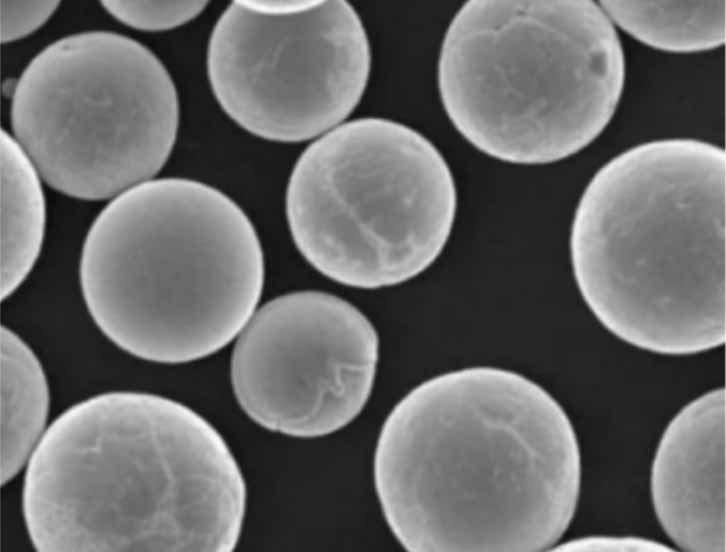
Vorteile und Nachteile von Induktiv gekoppeltes Plasma
Jede Analysetechnik hat ihre Stärken und Schwächen, und die ICP bildet da keine Ausnahme. Im Folgenden werden die Vor- und Nachteile des Einsatzes von ICP für die Elementaranalyse untersucht.
Vorteile der ICP:
- Hohe Empfindlichkeit: ICP kann Elemente im Spurenbereich nachweisen und eignet sich daher ideal für Anwendungen, bei denen es auf präzise Messungen ankommt.
- Multi-Element-Fähigkeit: Die Möglichkeit, mehrere Elemente gleichzeitig zu analysieren, spart Zeit und Ressourcen.
- Großer Dynamikbereich: Mit ICP können Elemente in einem breiten Konzentrationsbereich genau gemessen werden.
- Vielseitigkeit: ICP kann für die Analyse einer Vielzahl von Probentypen verwendet werden, darunter Flüssigkeiten, Feststoffe und Gase.
- Reproduzierbarkeit: Die stabilen Bedingungen in der ICP gewährleisten konsistente und zuverlässige Ergebnisse.
Nachteile der ICP:
- Hohe Betriebskosten: Die Kosten für den Betrieb eines ICP-Systems, einschließlich des Verbrauchs von Argongas und der Wartung des HF-Generators, können erheblich sein.
- Komplexität: ICP-Systeme erfordern geschultes Personal und eine sorgfältige Kalibrierung, um genaue Ergebnisse zu gewährleisten.
- Vorbereitung der Probe: Einige Proben erfordern eine umfangreiche Vorbereitung, bevor sie mit ICP analysiert werden können, was den Prozess zeitaufwändig und komplex macht.
- Störung: Obwohl die ICP hochempfindlich ist, kann sie für Störungen durch bestimmte Elemente oder Matrixeffekte anfällig sein, was die Genauigkeit der Analyse beeinträchtigen kann.
FAQ
Lassen Sie uns abschließend noch einige allgemeine Fragen zu ICP klären, die in Diskussionen über diese Technologie häufig auftauchen.
| Frage | Antwort |
|---|---|
| Was ist ein induktiv gekoppeltes Plasma (ICP)? | ICP ist eine Technik zur Erzeugung eines Plasmas für den Nachweis und die Analyse von Elementen, insbesondere von Metallen. |
| Wie funktioniert die ICP? | Bei der ICP wird ein elektromagnetisches Hochfrequenzfeld verwendet, um Gas zu ionisieren und ein Plasma zu erzeugen, das dann zur Atomisierung und Analyse von Elementen in einer Probe verwendet wird. |
| Welche Arten von ICP-Systemen gibt es? | Zu den wichtigsten Typen gehören ICP-OES, ICP-MS und ICP-TOFMS, die jeweils auf spezifische Anwendungen zugeschnitten sind. |
| Welche Metalle können mit ICP analysiert werden? | Mit ICP kann eine breite Palette von Metallen analysiert werden, darunter Nickel, Titan, Aluminium, Kupfer, Eisen und viele andere. |
| Warum wird Argon in der ICP verwendet? | Argon wird verwendet, weil es inert ist, ein hohes Ionisierungspotenzial hat und das Plasma stabilisiert, ohne die Probe zu kontaminieren. |
| Was sind die Vorteile der ICP? | ICP bietet hohe Empfindlichkeit, Multielementfähigkeit, einen großen dynamischen Bereich und Vielseitigkeit in der Probenanalyse. |
| Gibt es Nachteile bei der Verwendung von ICP? | Ja, ICP kann kostspielig im Betrieb sein, erfordert geschultes Personal und kann Probleme mit Interferenzen und der Probenvorbereitung mit sich bringen. |
| Wie schneidet ICP im Vergleich zu anderen Techniken wie AAS ab? | Die ICP bietet im Allgemeinen eine höhere Empfindlichkeit, die Möglichkeit, mehrere Elemente gleichzeitig nachzuweisen, und einen größeren dynamischen Bereich als die AAS. |

